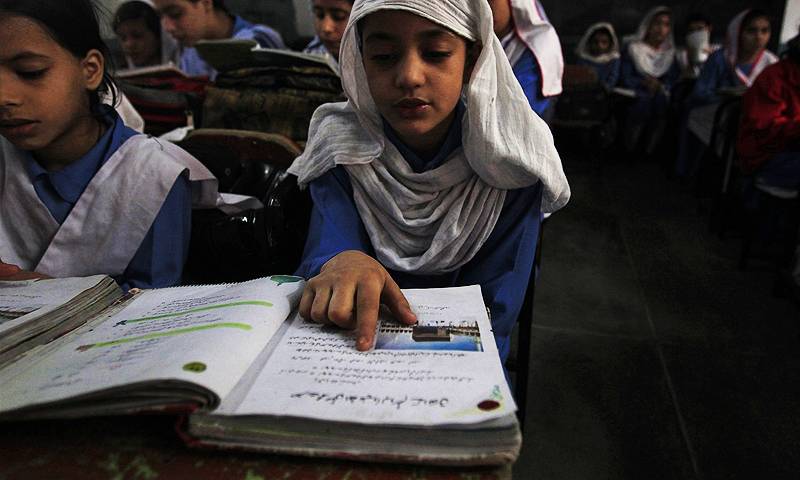Disability and higher education

The right to education is a fundamental human right. Every individual, irrespective of race, gender, nationality, ethnic or social origin, religion or political preference, age or disability, is entitled to have equal access to education.
When we use the term “disability,” many people think about the obvious, including mobility impairments and common sensory disabilities, such as blindness. However, disabilities also include a number of other conditions that typically are invisible to others, Specific Learning Disability (SLD) is one of them.
SLD is a disorder in one or more of the basic psychological processes involved in understanding or in using language, spoken or written.
The diagnosis requires persistent difficulties in reading, writing, arithmetic, or mathematical reasoning skills during formal years of schooling. Symptoms may include inaccurate or slow and effortful reading, poor written expression that lacks clarity, difficulties in remembering numerical facts, or inaccurate mathematical reasoning. Such learns face difficulties in comprehending classroom lectures and in attempting papers during examination. These students have lower perception of their own academic intellectual abilities, lower grades, and lower test scores than that of the students without LD.
Specific learning disorder is diagnosed through a clinical review of the individual’s developmental, medical, educational, and family history, reports of test scores and teacher observations, and response to academic interventions.
There are some centers in Pakistan which are helping children in overcoming these problems but no such system is available at the level of higher studies. Studying in higher education is very different from studying in schools. So, these invisible disabled students pose particular challenges to higher education (HE) in relation to issues concerning admission, curriculum, teaching, learning and assessment.
These students should be facilitated in getting admission in universities and must be put with the normal students rather than separating them from good students because SLD students learn better in inclusive education systems.
Pakistan’s government provides 2% reservation in government jobs and education in government funded educational institutions for physically disabled people. But unfortunately, this benefit to the disabled doesn’t apply to learning disabilities. On the other hand, in many other countries, students suffering from learning disabilities enjoy the same facilities as are given to physically disabled students. These countries have specific laws to facilitate students suffering from learning disabilities and Pakistan should follow suit. These laws not only address such students’ issue of getting admission into universities but also ensure financial support in buying some technical devices which boost the efficiency of an SLD student.
Once invisibly disabled students get admission in universities, they face difficulties in handling academic demands, dealing with criticism, societal negation and adjusting themselves to university life, so they need extra attention and time. For this reason there should be disability centers in universities. It is unethical and unfair to bring students to an institution that is not well equipped to support these students. The need of the hour is that disability centers should be established in universities where such students can have proper counseling by psychologists who should assist them in establishing motivational drive, devise learning strategies, bring organization to their thoughts, create compensatory skills and generate the urge to establish social relations. In addition to this, universities should organize anxiety reduction and stress management workshops.
The role of the university faculty is also very vital in this context. In a classroom, a student who is suffering from SLD has different requirements from a normal student. Usually normal students prefer written explanations but these students like verbal or visual explanations. A teacher needs to devise unusual strategies to fill these needs. As today’s students are digital natives, so the maximum use of modern technology like multi-media can be a good incentive. In case of the non-availability of such resources, visual explanations, diagrams or figures can be really helpful. Additionally, class printed notes and the use of tape recorders or private coaching can be beneficial too.
Students with SLDs have large gaps between their competence and their actual achievements. Sometimes their performance is much better verbally but the moment they enter the examination hall they are more stressed and frustrated compared to the average student. These students face difficulty in terms of memory, pace of writing and resultant stress. That is why these students have a smaller success ratio. The present condition can be improved by taking certain measures. For instance, by giving them extra time for attempting the paper, by showing leniency in marking their papers, by ignoring their spellings or grammatical errors, or by granting them breaks during examinations.
Lack of awareness about the problems faced by invisibly disabled students has resulted in a lower literacy rate in higher education in Pakistan. So, a sincere contribution is needed on the part of the government, parents, university management, teachers and community in helping students with learning disabilities.
If we continue neglecting the needs of invisibly disabled students, we will continue increasing the crime rate in the country; there is much research to suggest that these students, if not guided or helped, turn to crime to make ends meet. We must remember that just as a diabetic needs insulin, so an SLD student needs community guidance and support.
The writer is PHD Scholar and Lecturer in Minhaj University Lahore.





